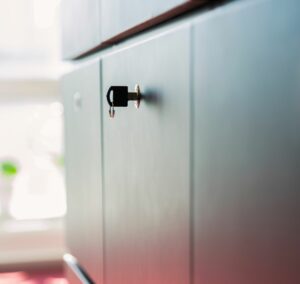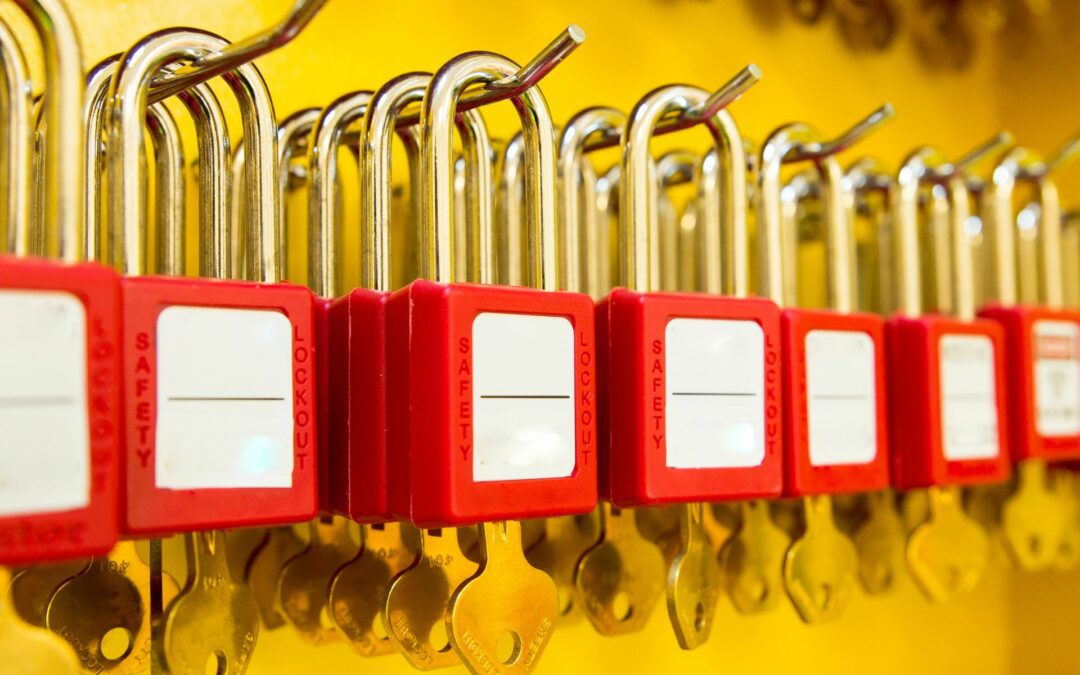In the realm of security, both padlocks and cabinet locks play a pivotal role in safeguarding our valuables and sensitive information. Understanding the nuances of these locks is crucial for anyone looking to enhance the security of their home or business. That’s why this blog delves into the intricacies of padlock and cabinet lock services. Start exploring the different types of padlocks available, how to choose the right lock for your cabinets, common issues that may arise with these locks, and the importance of maintaining them properly in this blog.
Padlock Basics: Understanding the Different Types of Padlocks
Padlocks are essential security devices that come in a variety of types, each with its own unique features and benefits. Understanding the different types of padlocks can help you make an informed decision when choosing the right one for your needs. One of the most common types of padlocks is the traditional key-operated padlock. These padlocks require a key to lock and unlock, providing a straightforward and reliable security solution. They are often made from durable materials such as brass or hardened steel, ensuring strength and resistance against tampering.
Another popular type is the combination padlock. Instead of a key, these padlocks use a numeric or alphanumeric combination to secure your belongings. This eliminates the need to carry around a key, making it convenient for those who tend to misplace or forget keys. Combination padlocks offer a high level of security, as the combination can be easily reset if needed.
There are also padlocks with special features, such as weatherproof padlocks, that are designed to withstand harsh outdoor conditions. These padlocks are typically made from materials that are resistant to rust and corrosion, ensuring long-term durability. Additionally, there are shrouded padlocks that have a protective cover over the shackle, making it difficult for thieves to cut or pry it open. When choosing a padlock, consider factors such as the level of security required, the intended use, and the environment in which it will be used. By understanding the different types of padlocks available, you can select the one that best fits your needs and provides the peace of mind you deserve.
Cabinet Locks: How to Choose the Right Lock for Your Cabinets
Choosing the right lock for your cabinets is crucial in ensuring the security of your valuables and sensitive documents. With various options available in the market, it can be overwhelming to determine which lock is best suited for your cabinets. Luckily, there is a way to make the selection process less overwhelming. First, you need to assess the level of security you require. Cabinets containing important documents or valuable items may need a high-security lock that is more resistant to picking or drilling. On the other hand, cabinets in low-risk areas can be secured with a basic lock. Understanding your security needs will help you prioritize the features you should look for in a cabinet lock.
Next, consider the type of cabinet you have. Different cabinets may require different types of locks. For instance, if you have a wooden cabinet, you may need a lock that can be mounted on the surface or a lock that can be inserted into a drilled hole. Understanding the structure and material of your cabinet will guide you in selecting a lock that is both compatible and effective.
It’s also vital to think about convenience and ease of use. If you frequently access the contents of your cabinets, you may want a lock that is simple to operate, such as a keyless lock with a numeric code. Similarly, if you have multiple cabinets that require separate locks, you might want to consider a master key system for convenience. Remember, when choosing a lock for your cabinets, it is essential to strike a balance between security and convenience. While you want a lock that is difficult to compromise, you also want a lock that allows you easy access. By considering factors such as the level of security needed, the type of cabinet, and the convenience of use, you can choose the right lock that provides maximum protection for your cabinets.


Common Issues with Padlocks and Cabinet Locks and How to Fix Them
When it comes to padlocks and cabinet locks, it’s not uncommon to encounter a few hiccups along the way. Thankfully, many of these issues can be easily fixed with a little bit of know-how and some practical solutions. One common issue is a jammed lock, where the key refuses to turn or gets stuck midway. This can happen due to dirt or debris that has accumulated inside the lock. To fix this, you can try using a lubricant like graphite powder to loosen up the mechanism. Simply insert the key and turn it gently to distribute the lubricant evenly. If the lock is still giving you trouble, you might need to disassemble it and clean out any stubborn debris.
Another common issue is a misaligned lock, which occurs when the lock and its corresponding latch or strike plate are not properly aligned. This can make it difficult to open or close the lock smoothly. To fix this, you can try adjusting the strike plate. Use a screwdriver to loosen the screws holding the plate in place, and then move it slightly in the direction needed for alignment. Once adjusted, tighten the screws back up and test the lock to see if it functions properly. If the issue persists, you may need to consult a professional locksmith who can assess the situation and provide the necessary repairs or replacements.
Tips for Maintaining and Extending the Lifespan of Padlocks and Cabinet Locks
To ensure the longevity of your padlocks and cabinet locks, proper maintenance is vital. Regular cleaning and lubrication are key to preventing rust and ensuring smooth operation. Start by using a soft cloth and a mild detergent to clean the locks, removing any dirt or debris that may have accumulated. Be sure to dry them thoroughly to prevent moisture buildup, which can lead to corrosion. Once cleaned, it’s important to lubricate the locks with a suitable lubricant. Avoid using oil-based lubricants as they can attract dirt and grime over time. Instead, opt for a silicone-based lubricant that will provide long-lasting lubrication without attracting debris. Apply a small amount of lubricant to the key and insert it into the lock, turning it several times to distribute the lubricant evenly. This will ensure smooth operation and prevent the locks from seizing up.
In addition to regular maintenance, it’s also crucial to handle your locks with care. Avoid forcing keys into locks, as this can cause damage to the mechanism. If you encounter resistance, try applying gentle pressure and wiggling the key slightly to find the correct alignment. Prevention is always better than cure, so be mindful of how you handle your locks to avoid unnecessary wear and tear. By following these tips for maintaining and extending the lifespan of your padlocks and cabinet locks, you can ensure that they continue to function properly for years to come. Regular cleaning, proper lubrication, and gentle handling are key to keeping your locks in optimal condition.
When to Call a Professional Locksmith for Padlock and Cabinet Lock Services
One of the key factors to consider when deciding whether or not to call a professional locksmith for padlock and cabinet lock services is the complexity of the issue you are facing. While some minor problems can be easily fixed with a little bit of know-how and a few simple tools, more intricate issues may require the expertise of a professional. If you find yourself struggling to identify the root cause of the problem or unable to resolve it on your own, it may be time to reach out for professional assistance.
Another factor to consider is the security of your valuables. Padlocks and cabinet locks are designed to protect your belongings, whether they be important documents, valuable assets, or sentimental items. If you suspect that your locks have been tampered with, or if you’re concerned that they are not providing adequate security, it’s best not to take any chances.
Luckily, a professional locksmith can assess the situation, determine any vulnerabilities, and provide expert recommendations on how to enhance the safety and security of your padlocks and cabinet locks. Remember, when it comes to the security of your belongings, it’s always better to err on the side of caution and seek the assistance of a professional locksmith who can provide the expertise and knowledge needed to address your specific padlock and cabinet lock needs.
The Benefits of Hiring a Professional Locksmith for Padlock and Cabinet Lock Services
When it comes to padlock and cabinet lock services, hiring a professional locksmith can offer numerous benefits. Firstly, professional locksmiths have the expertise and knowledge to assess your specific needs and provide tailored solutions. They understand the intricacies of different types of padlocks and cabinet locks, ensuring that you receive the most suitable and efficient options for your security requirements.
Another advantage of hiring a professional locksmith is the assurance of quality workmanship. DIY lock installations or repairs can often lead to subpar results, jeopardizing the security of your valuables. A professional locksmith, on the other hand, will not only use high-quality locks but will also ensure that they are installed correctly and functioning optimally. This attention to detail can provide you with peace of mind, knowing that your padlocks and cabinet locks are reliable and durable.
How do I choose the right type of padlock?
When choosing a padlock, consider factors such as the level of security needed, the location it will be used in, and the weather conditions it will be exposed to. There are different types of padlocks available, such as combination padlocks, keyed padlocks, and electronic padlocks. Choose one that best suits your needs.
What are some common issues with padlocks, and how can I fix them?
Common issues with padlocks include getting jammed or stuck, keys not turning smoothly, and rusting. To fix these issues, you can try lubricating the lock with graphite or a silicone-based lubricant, gently tapping the lock to align the pins, or using a rust remover to clean off any rust.
How can I extend the lifespan of my padlock and cabinet lock?
To extend the lifespan of your locks, regularly clean them to remove dirt and debris, lubricate them to ensure smooth operation, and avoid exposing them to extreme weather conditions. Additionally, avoid forcing the lock open or using excessive force when locking or unlocking.
When should I call a professional locksmith for padlock and cabinet lock services?
It is recommended to call a professional locksmith if you encounter complex lock issues that you’re unable to resolve on your own, if your locks are damaged or broken beyond repair, or if you need to install high-security locks for added protection.
What are the benefits of hiring a professional locksmith for padlock and cabinet lock services?
Hiring a professional locksmith ensures that your locks are properly installed, repaired, or replaced. They have the expertise and tools to handle various lock-related issues efficiently, saving you time and effort. Additionally, they can provide valuable advice on choosing the right locks for your specific needs.
How can I choose the right lock for my cabinets?
When choosing a lock for your cabinets, consider the level of security needed, the type of cabinet, and the accessibility requirements. Options include cam locks, cylinder locks, and electronic locks. Evaluate your specific needs and consult a professional locksmith if needed.
Are electronic padlocks more secure than traditional padlocks?
Electronic padlocks offer additional security features such as keyless entry, audit trails, and tamper alerts. However, the security level depends on the specific model and its resistance to hacking or electronic manipulation. Traditional padlocks can still provide adequate security depending on the quality and construction of the lock.
Can I use the same key for multiple padlocks and cabinet locks?
Yes, there are keying systems available that allow you to use the same key for multiple padlocks and cabinet locks. This can be convenient if you have multiple locks to manage and want to simplify access.
Are there any specific maintenance tips for cabinet locks?
To maintain cabinet locks, regularly clean them to remove dust and debris, check for any loose screws or parts, and lubricate the lock mechanism if necessary. Additionally, ensure that the cabinet doors are properly aligned and do not put excessive strain on the lock.
Can I install padlocks and cabinet locks myself?
Yes, you can install padlocks and cabinet locks yourself if you have the necessary tools and skills. However, for complex installations or if you’re unsure about the process, it is recommended to hire a professional locksmith to ensure proper installation and maximum security.
Keep Your Padlocks And Cabinet Locks In Shape With United Locksmith
Navigating the complexities of padlocks and cabinet locks can be a daunting task. From choosing the right type to addressing common issues and ensuring proper maintenance, there’s a lot to consider when it comes to securing your valuables. Thankfully, you don’t have to tackle these challenges alone. United Locksmith offers comprehensive padlock and combination lock services, bringing a wealth of expertise and experience to your doorstep. Our team of skilled professionals is well-equipped to help you select the most suitable locks for your needs, resolve any issues swiftly, and provide ongoing maintenance to ensure lasting security. Get started and contact us today.

